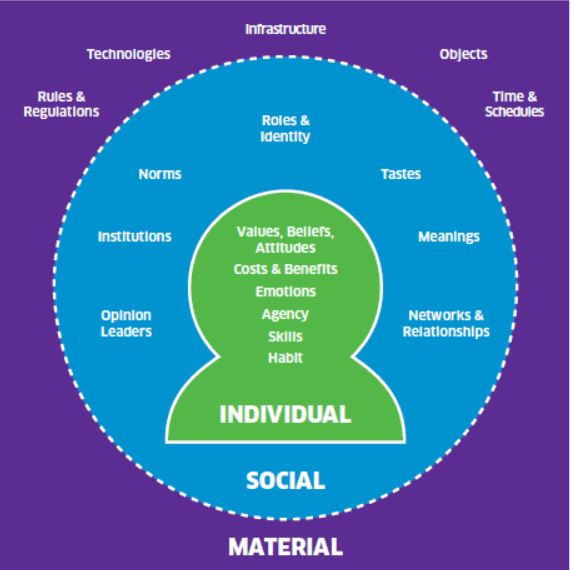ISM Principles of Change
| Line 2: | Line 2: | ||
The ISM tool was developed by researcher Andrew Darnton and launched by the Scottish Government in 2013 to evaluate the impact of sustainability challenges in certain projects [ISM]. Since it has found use for policy makers and practicioners to influence people's behaviours and bring about change [Govscot.]. | The ISM tool was developed by researcher Andrew Darnton and launched by the Scottish Government in 2013 to evaluate the impact of sustainability challenges in certain projects [ISM]. Since it has found use for policy makers and practicioners to influence people's behaviours and bring about change [Govscot.]. | ||
| + | |||
| + | *Background | ||
| + | *The three aspects | ||
| + | *Usage | ||
| + | *Limitations | ||
| + | *References | ||
[[File:ISM.jpg]] | [[File:ISM.jpg]] | ||
Revision as of 11:03, 14 February 2021
The ISM - Individual, Social, and Material - model is a multi-disciplinary tool to study the human behaviour in the aspects of: behavioural economics, social psychology and sociology [GovScot.]. The model facilitates an integrated, whole-system perspective of the challenges of individuals, organizations, and partnerships. Through the process, stakeholders aim to develop a shared understanding by identifying their respective roles in bringing about change. Hereby, the model draws insight from multiple disciplines to ease the decision-making of complex problems [sustain.].
The ISM tool was developed by researcher Andrew Darnton and launched by the Scottish Government in 2013 to evaluate the impact of sustainability challenges in certain projects [ISM]. Since it has found use for policy makers and practicioners to influence people's behaviours and bring about change [Govscot.].
- Background
- The three aspects
- Usage
- Limitations
- References
It fosters identification and development of options and shared ownership of solutions, taking account of influences on behaviours and decision-making which ultimately determine the impact of projects and actions.
